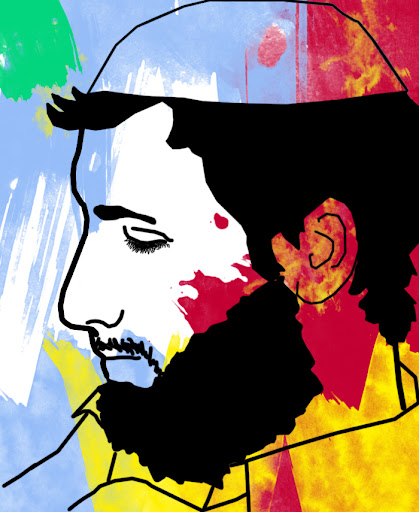8 months ago
Thursday, January 09, 2014
The Woman That Saved 3000 Jews
Given my time spent in Warsaw, I want to share a few thoughts I found about Irena Sendler
Last year was the 70th anniversary of the Warsaw Ghetto Uprising. The few survivors of that revolt are, if still alive, in their 80s and 90s but today there is more interest than ever in the different aspects of the historical episode. Today the Polish Jewish Historical Institute offers tours of the site, hidden archives have been discovered and their materials published and Holocaust museums such as the United States Holocaust Museum and Yad Vashem continue to conduct research and uncover new information about life in the ghetto, the individuals who lived in the ghetto and the uprising itself. Some of the information has come from unlikely sources.
In 1999 a group of non-Jewish schoolgirls embarked on a social studies project in which they were assigned to research the Holocaust. The girls became intrigued by a chance remark that they heard regarding a non-Jewish Polish woman, Irena Sendler, who had successfully saved over 2500 children from the ghetto. The girls began to investigate the story and were soon caught up in the saga of how Sendler smuggled hundreds of children out of the ghetto and ensured their survival. The girls' project was published and has since become a book, a website and a performance which, over the last 10 years, has been viewed by audiences throughout the world. The project also spawned the Lowell Milken Center where student projects of unsung heroes are displayed.
Irena Sendler was a Polish social worker when the Nazis invaded Poland in 1939. When the Nazis built the Warsaw ghetto in 1940 they interned almost half a million Jews within the ghetto walls . Sendler, who had joined the Zagota Polish underground, procured papers which allowed her to enter the ghetto as an expert in infectious diseases.
At first Sendler tried to bring food and medicines into the ghetto but as time went by she realized that she could save more lives if she concentrated to bringing people out of the ghetto. She decided to put her efforts into removing children from the ghetto because, she realized, it was easier to remove them and easier to hide them once they were on the Aryan side of the ghetto walls. Sendler began to smuggle children out of the ghetto, sedating them and hiding them under her tram seat, in a workman's toolbox or even in carts under garbage or barking dogs. Zagota members helped Sendler lead the older children out of the ghetto through the sewers that ran underneath the city or through a hidden passageway that was located in the Old Courthouse at the edge of the ghetto.
Sendler's early efforts were aimed at the street children who were left orphans after their parents died or were deported. After a few weeks she began to approach parents and ask them to allow her to take their children out of the ghetto. These were heart wrenching moments for both Sendler and the parents. The parents had to decide whether their children would have the best chance of survival in the ghetto with their families or on their own among Polish non-Jews. "I talked the mothers out of their children" Sendler later said of the scenes in which she tried to convince families to allow her to rescue their children.
The second part of the operation involved securing hiding places for the children. Sendler carefully recorded the names and hiding places of each child on pieces of tissue paper which she then hid in glass jars that were buried in her yard, hoping to reunite them with their families after the war. The children were hidden in convents and orphanages throughout Poland as well as with sympathetic Polish families.
Sendler was captured by the Gestapo in October 1943. The Germans imprisoned and tortured her but she didn't reveal any information about the children's whereabouts. The Germans signed a death decree against her but her Zagota comrades were able to secure her release and she lived out the rest of the war in hiding.
Sendler was still alive in 2003 as the Kansas schoolgirls were completing their project. They traveled to Warsaw and met with Sendler. Media outlets got wind of the story and began to publicize the story which has now reached millions of people around the world.
Posted by
Mottel
at
8:33 AM
![]()
Subscribe to:
Post Comments (Atom)


2 comments:
על פרשת האברך החשוב אליאור חן שליט"א, מהי האמת ?
הנה האמת על כל מה שלא רוצים שתדעו
על פרשת האברך החשוב אליאור חן שליט"א
"והאלוקים יבקש את נרדף" (קהלת ג, טו)
http://bshch.blogspot.co.il/2014/09/blog-post_520.html#more
I m so glad to visit this blog.This blog is really so amazing
Post a Comment